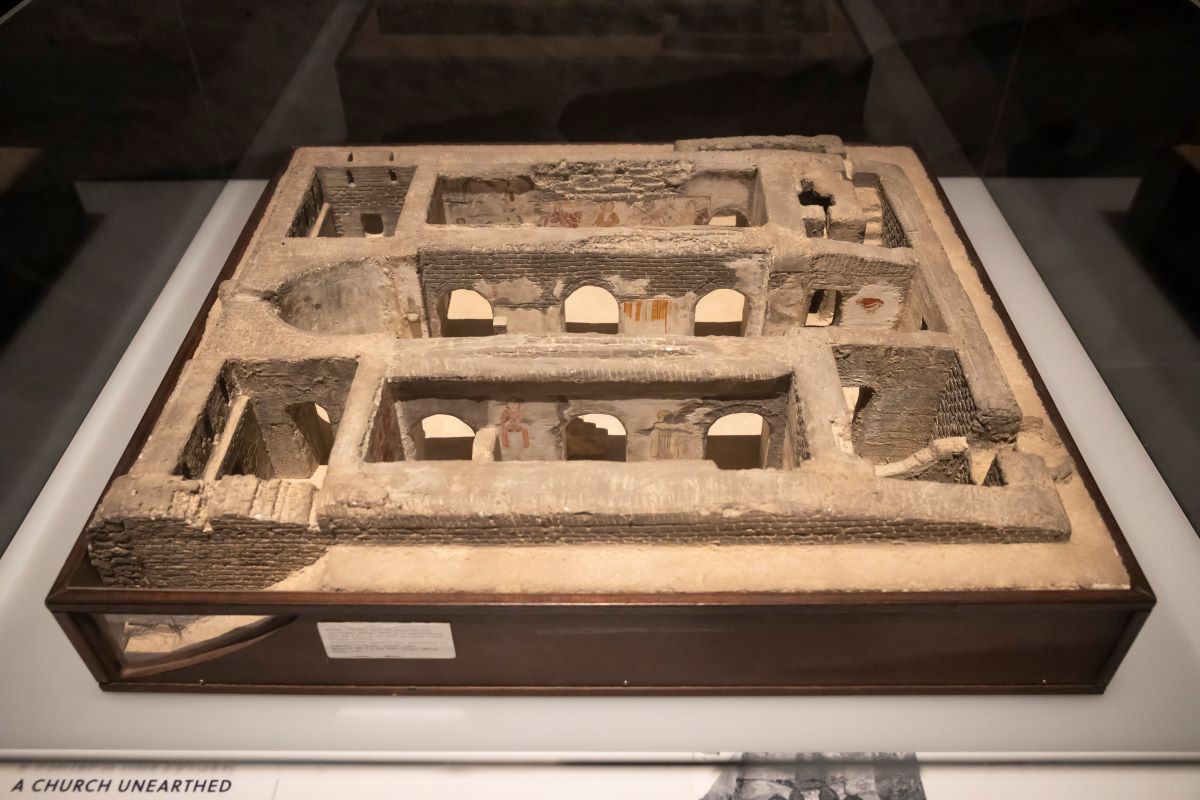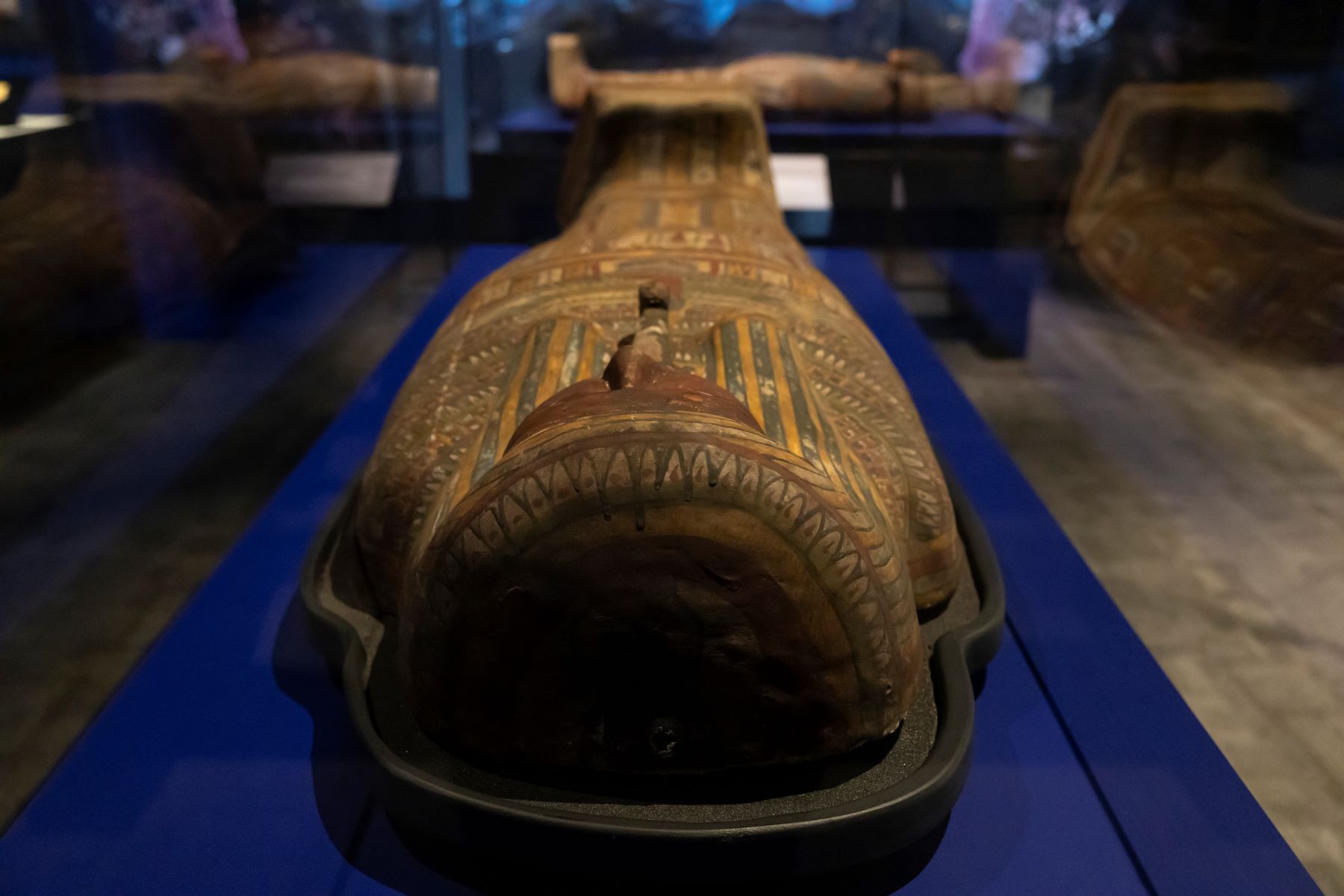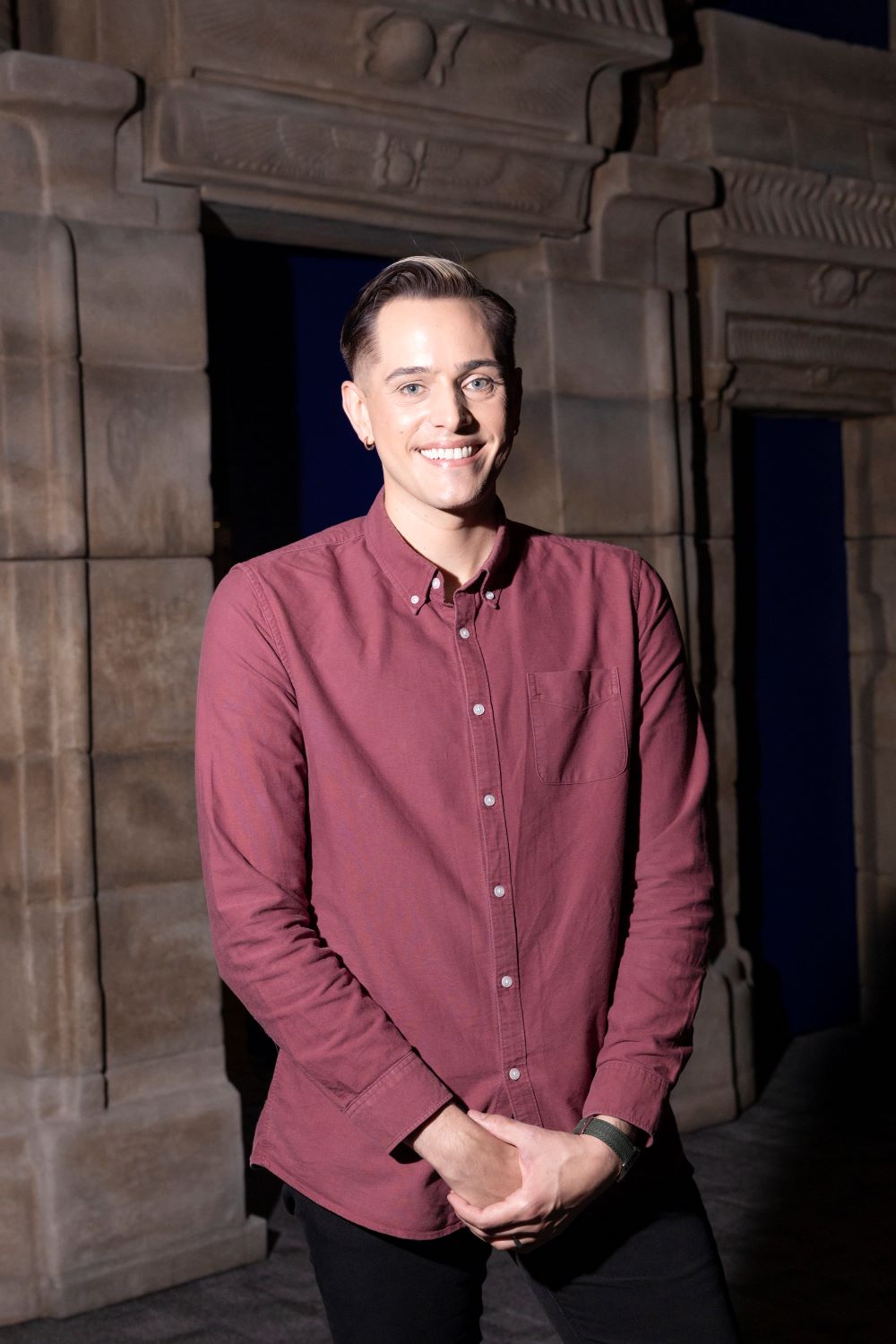Forever present in our pop culture, architecture, historical studies and scientific advances, Ancient Egypt has fascinated the world for centuries. Now, one of the greatest collections from the ancient civilization, Discovering Ancient Egypt, is on display at the National Museum of Australia until 8 September 2024.
Visitors are transported several thousand years back in history as they’re invited to immerse themselves in this fascinating and rich culture. Making their way through more than 220 objects, visitors will witness objects and artefacts from the lives of everyday people, right up to the burial rituals of the powerful.
The display includes intricately decorated coffins, stunning jewellery, ornate sculptures, incredibly preserved scrolls from the Book of the Dead, and mummified humans and animals.
Like many of us, an interest in the ancient Egyptian culture was sparked for Dr Daniel Soliman, curator of Egypt and Nubia collections at the Dutch National Museum of Antiquities (Rijksmuseum van Oudhedenor RMO) as a young child. With Egyptian heritage, he often visited the country in his childhood and was in awe of what he saw.
“My family would take me to the Egyptian Museum in Cairo, which was breathtaking. That really planted the seed for me to get so interested, and throughout my youth, I kept that interest, that fascination, started to read more and eventually went on to study Egyptology in Leiden.”
When putting together the exhibition, Dr Soliman says they first had to decide what story they wanted to tell. They ultimately decided to highlight some key areas like the daily lives of regular ancient Egyptians, the afterlife, religious and magical practices.
“When you write out those storylines, you try to find objects that are suitable to tell that story. At the same time, we wanted show highlights from the collection, representative of the collection.”
Preparing a travelling exhibition also allows the RMO to do conservation work on the pieces to ensure they are stable enough to travel.
The ancient Egyptians are known for their burial rituals for the powerful, nobles and rulers, the mummification process, and extravagant tombs filled with offerings and items to take to the next life. Behind a curtain lay five mummified bodies, three women and two men.
“Within the bandages are precious amulets and, on the body, other precious objects are placed,” says Dr Soliman.


Outside of the coffins and stored in the rooms of the tombs were precious objects given to the deceased to take with them to the afterlife. Dr Soliman says that after death there were two essential things for ancient Egyptians, the first being the preservation of the body.
“They believed that a manifestation of the deceased person would still be able to visit the world of the living during the day as long as the sun was out. In order for that manifestation to go back to the deceased person the body had to be preserved in detail,” he says.
The second was the transformation of the deceased into an almost divine being, often referred to at the time as an illuminated being. They would then exist in the world of the gods equipped with magical powers; Dr Soliman says that the beautiful pictures on the coffins serve to establish that goal.
One of the coffins in the exhibition, there is an image of the deceased man amongst the gods, a judgment day of sorts. The gods are weighing the man’s heart to ensure he has lived a life worthy of being welcomed to their realm.
“There are inscriptions in hieroglyphs with magical spells that make sure that the outcome of the judgment is positive for the deceased and the deceased will travel to the world of the gods. It’s protection, it’s transformation, it is making the deceased more than just mortal,” Dr Soliman says.
The devoted Egyptologist says that having that familial connection to the country serves as a reminder that Egypt also exists in the here and now. While putting the exhibition together the Dutch Museum ensured to include the contributions of Egyptian archeological workers, scholars and Egyptologists and a voice to the contemporary Egyptian perspective.
“We isolate Ancient Egypt as a timeframe, which, of course, is incredibly interesting but we can only know ancient Egypt through modern times and that includes contemporary Egypt,”
Hoping that the exhibition might help develop a deeper understanding of the culture, Dr Soliman says there is more to the times than the rulers and structures.
“While we may always think of the grandiose, the huge pyramids and all the kings and queens, Ancient Egypt is a culture with people of flesh and blood, they were people,” says Dr Soliman “We have on display a correspondence between two people where they’re asking about each other’s health, wishing each other well. They’re human beings and they try to make sense of the world just like we do today.”
Also hoping to highlight the lives of the everyday ancient Egyptians is Senior curator at the National Museum of Australia and lead coordinating curator on Discovering Ancient Egypt, Craig Middleton.

“If you ask anyone in the world, any Australian they’re gonna say words like Tutankhamun, pyramids which is amazing that people are so familiar with this culture. Often because of Hollywood, books and literature, we know about the pharaohs and the rulers but pharaohs can’t exist without the everyday people.”
In his role as a social historian, Mr Middleton often finds himself pondering what life was really like for the everyday people of different times. From a station of common smells to everyday objects like an engraved oil burner and small woven basket we can see items that could be current today.
“You can feel that this has been thousands and thousands of years ago in their home, its amazing that something and fragile survived… For me, a lot of objects that I am taken by are that one that I can see were used in people’s homes,” Mr Middleton says.
Most of what we know about the ancient world comes from tomb sites, the stuff that was buried in temples of the wealthy explains Mr Middleton. He says that the RMO was invited to Egypt to undertake an excavation where they discovered 30 dwellings of everyday people.
The culture’s belief in the afterlife is something Mr Middleton believes people are drawn to, he say no matter what our religion we all question what we are here for and what is next.
“I think the ancient Egyptians documented their belief so profoundly and that the afterlife wasn’t something to be scared of; they planned for it and they prepared for it.”
“Ancient Egyptians believed in a world that was created by many gods with the possibility of an internal afterlife… The afterlife was a place of peace and water, as in life people who died and sought out this eternal afterlife were at the whim of the god who could be cruel and unpredictable. Therefore, planning ahead was crucial.”
Even before the ancient civilization was captured in countless renditions of stories, novels, films and imagery, it was fascinating for those closer too the time as well.
“When can look back right to the Roman period when the Romans came to Egypt and started taking over, they would depict their rulers in the Egyptian style with the profiled feet, the headdress,” says Mr Middleton.
One thing that Mr Middleton does want people to consider is that the ancient Egyptian culture never ended he says Egypt is now a modern, thriving nation.
“Most people will know a famous pharaoh more than they might know the president of Egypt tight now. The pyramids today are still so iconic and important to Egyptian people today regardless of a different cultural belief, practice, religion.”
Discovering Ancient Egypt at the National Museum of Australia until 8 September; nma.gov.au
Canberra Daily is keen to hear from you about a story idea in the Canberra and surrounding region. Click here to submit a news tip.



